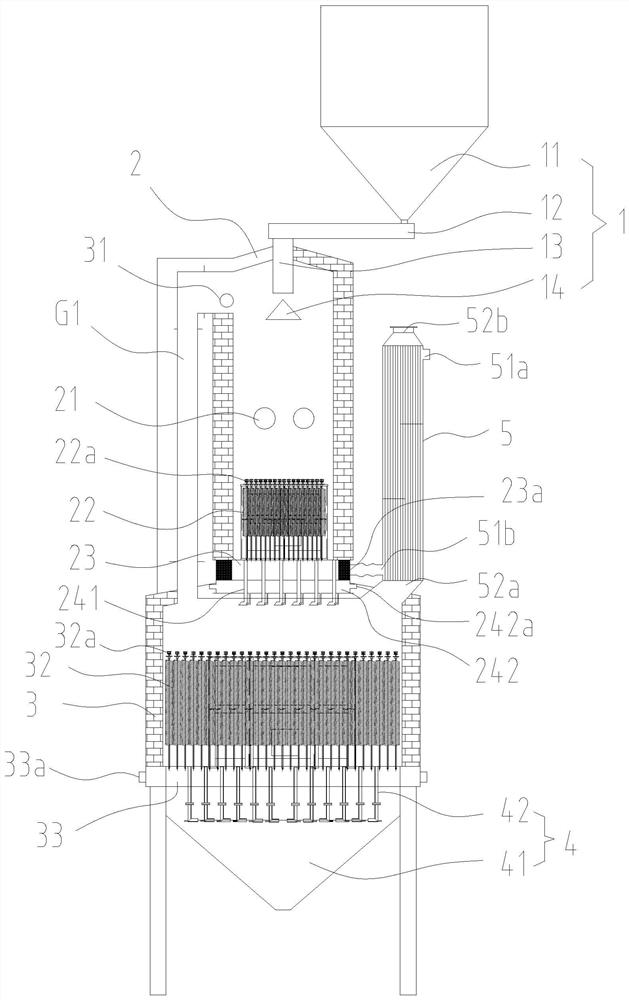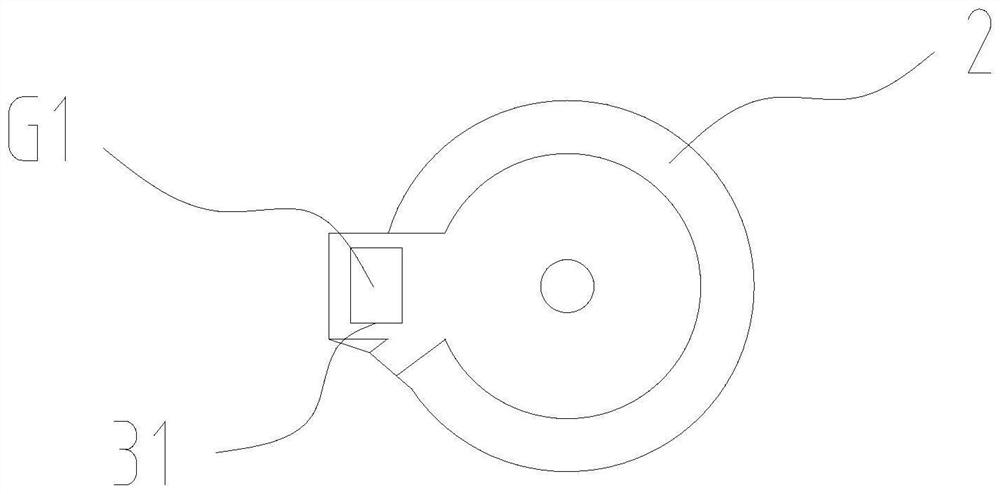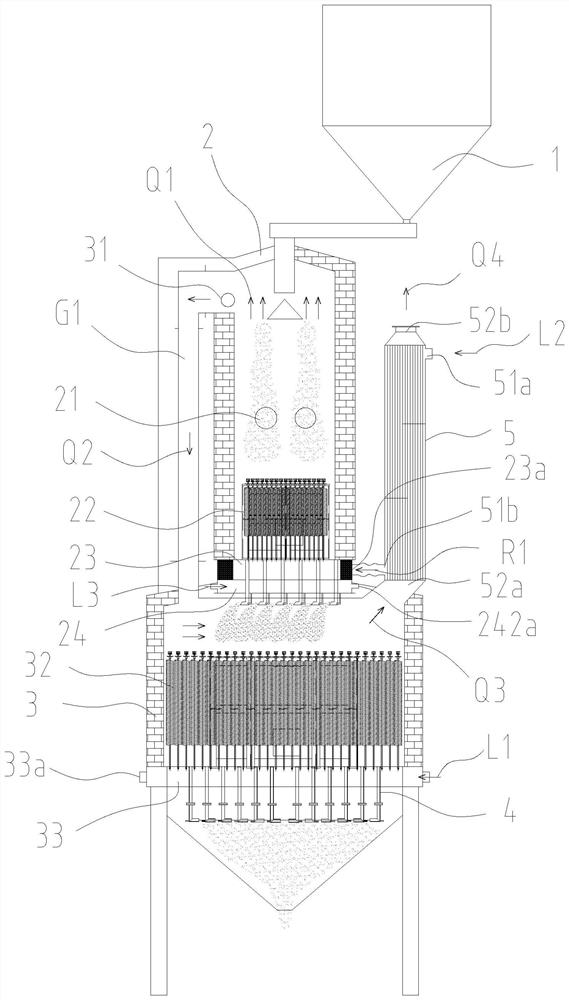Method for recycling foundry waste sand based on vertical energy-saving roasting furnace
A technology for foundry waste sand and roasting furnace, which is applied in combustion methods, foundry molding equipment, and machinery for cleaning/processing of foundry materials, etc. It can solve the problem of less research on mixed-mould foundry waste sand regeneration technology and cannot meet foundry sand technology. Quality requirements, poor removal of organic impurities by membranes, etc., to achieve high-efficiency roasting treatment effect, avoid exhaust emissions from causing harm to the environment, and exhaust exhaust purification treatment.
- Summary
- Abstract
- Description
- Claims
- Application Information
AI Technical Summary
Problems solved by technology
Method used
Image
Examples
Embodiment 1
[0061] A method for recycling waste foundry sand based on a vertical energy-saving roasting furnace, comprising the following steps:
[0062] S1. The foundry waste sand is crushed, and then the pretreatment waste sand is obtained after magnetic separation and screening;
[0063] S2. The pretreatment waste sand is fully mixed with the acid solution by spraying, and the reaction is carried out for 10-20min while stirring, then washed with water and air-dried; the acid solution is a mixed solution of hydrofluoric acid and 10% sulfuric acid, and the hydrofluoric acid The mass ratio of acid to 10% sulfuric acid is 1:1;
[0064] S3. add brown corundum abrasive in the waste sand after drying, enter the roasting furnace for roasting, the roasting temperature is 700 ° C, and the time is 10min; the addition of the brown corundum abrasive is 6% of the weight of the waste sand; after the roasting finishes Cooling and screening to obtain primary regenerated sand;
[0065] S4. Wet scrubbi...
Embodiment 2
[0067] A method for recycling waste foundry sand based on a vertical energy-saving roasting furnace, comprising the following steps:
[0068] S1. The foundry waste sand is crushed, and then the pretreatment waste sand is obtained after magnetic separation and screening;
[0069] S2. The pretreatment waste sand is fully mixed with the acid solution by spraying, and the reaction is carried out for 10-20min while stirring, then washed with water and air-dried; the acid solution is a mixed solution of hydrofluoric acid and 10% sulfuric acid, and the hydrofluoric acid The mass ratio of acid to 10% sulfuric acid is 2:1;
[0070] S3. add brown corundum abrasive in the waste sand after drying, enter the roasting furnace for roasting, the roasting temperature is 900 ° C, and the time is 5min; the addition of the brown corundum abrasive is 10% of the weight of the waste sand; after the roasting finishes Cooling and screening to obtain primary regenerated sand;
[0071] S4. Wet scrubbi...
Embodiment 3
[0073] A method for recycling waste foundry sand based on a vertical energy-saving roasting furnace, comprising the following steps:
[0074] S1. The foundry waste sand is crushed, and then the pretreatment waste sand is obtained after magnetic separation and screening;
[0075] S2. The pretreatment waste sand is fully mixed with the acid solution by spraying, and the reaction is carried out for 10-20min while stirring, then washed with water and air-dried; the acid solution is a mixed solution of hydrofluoric acid and 10% sulfuric acid, and the hydrofluoric acid The mass ratio of acid to 10% sulfuric acid is 1.5:1;
[0076] S3. in the waste sand after drying, add brown corundum abrasive, enter the roasting furnace for roasting, the temperature of roasting is 800 ° C, and the time is 6min; the addition of the brown corundum abrasive is 7% of the weight of the waste sand; after the roasting finishes Cooling and screening to obtain primary regenerated sand;
[0077] S4. Wet sc...
PUM
 Login to View More
Login to View More Abstract
Description
Claims
Application Information
 Login to View More
Login to View More - R&D
- Intellectual Property
- Life Sciences
- Materials
- Tech Scout
- Unparalleled Data Quality
- Higher Quality Content
- 60% Fewer Hallucinations
Browse by: Latest US Patents, China's latest patents, Technical Efficacy Thesaurus, Application Domain, Technology Topic, Popular Technical Reports.
© 2025 PatSnap. All rights reserved.Legal|Privacy policy|Modern Slavery Act Transparency Statement|Sitemap|About US| Contact US: help@patsnap.com



